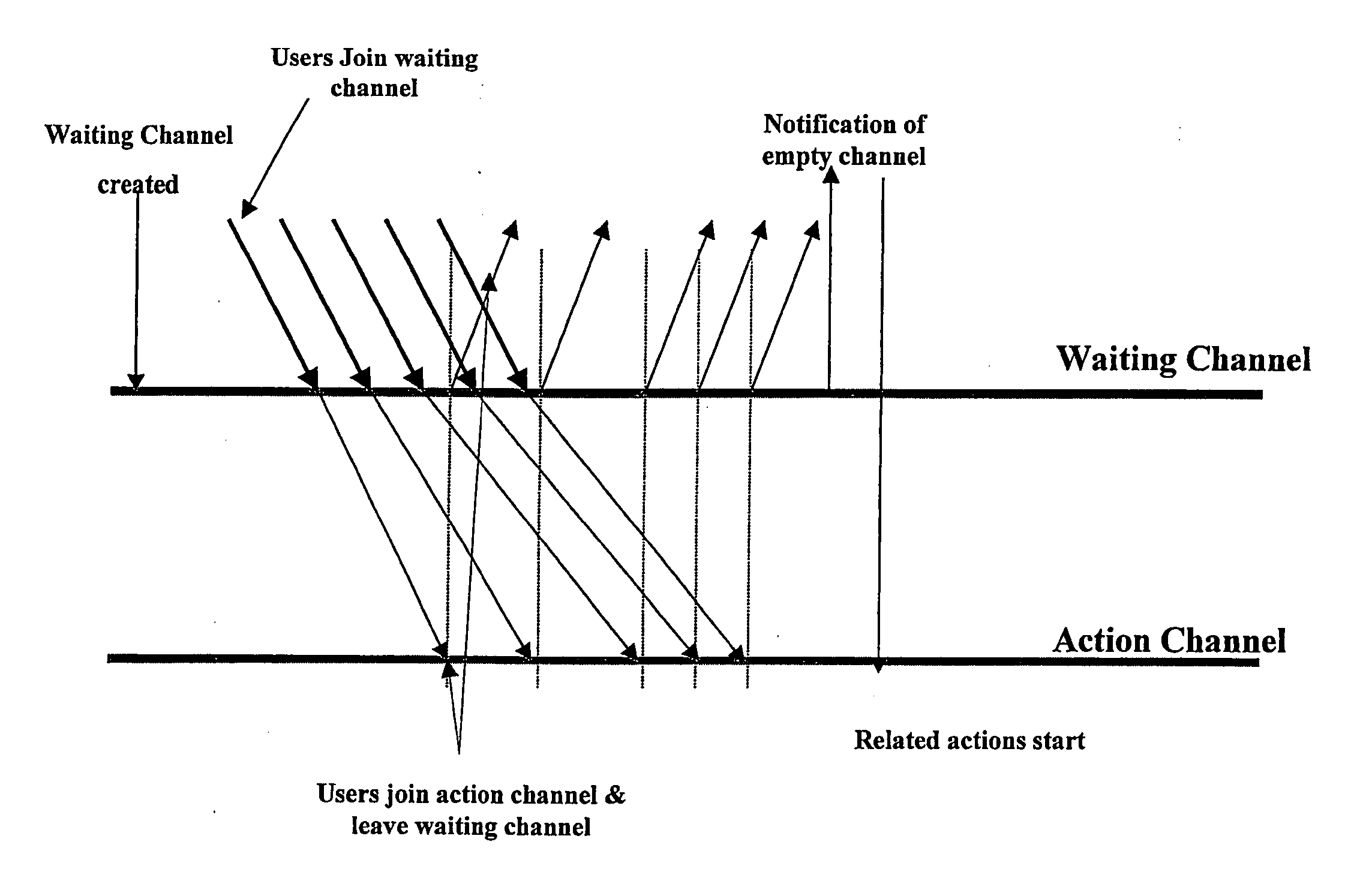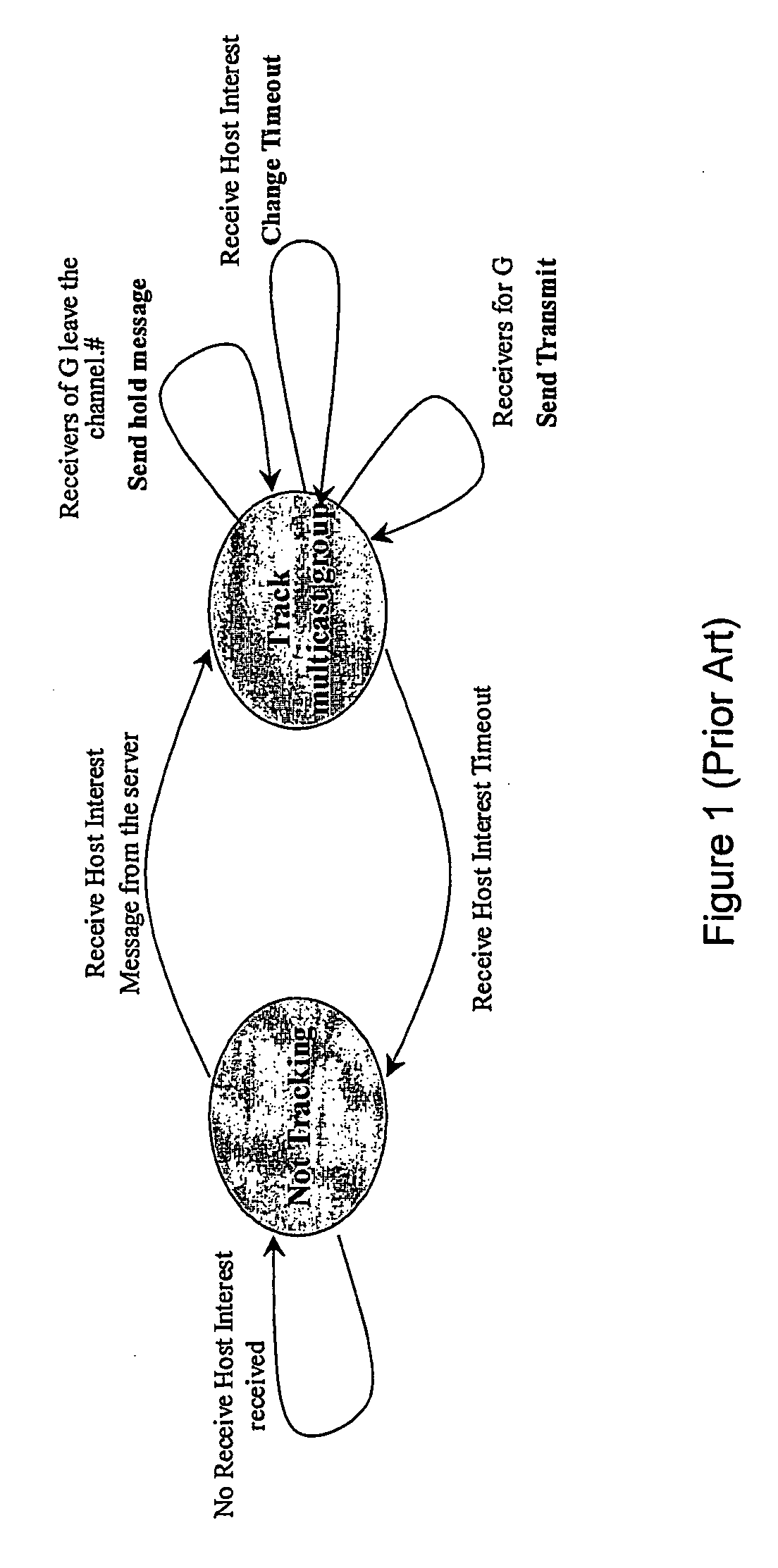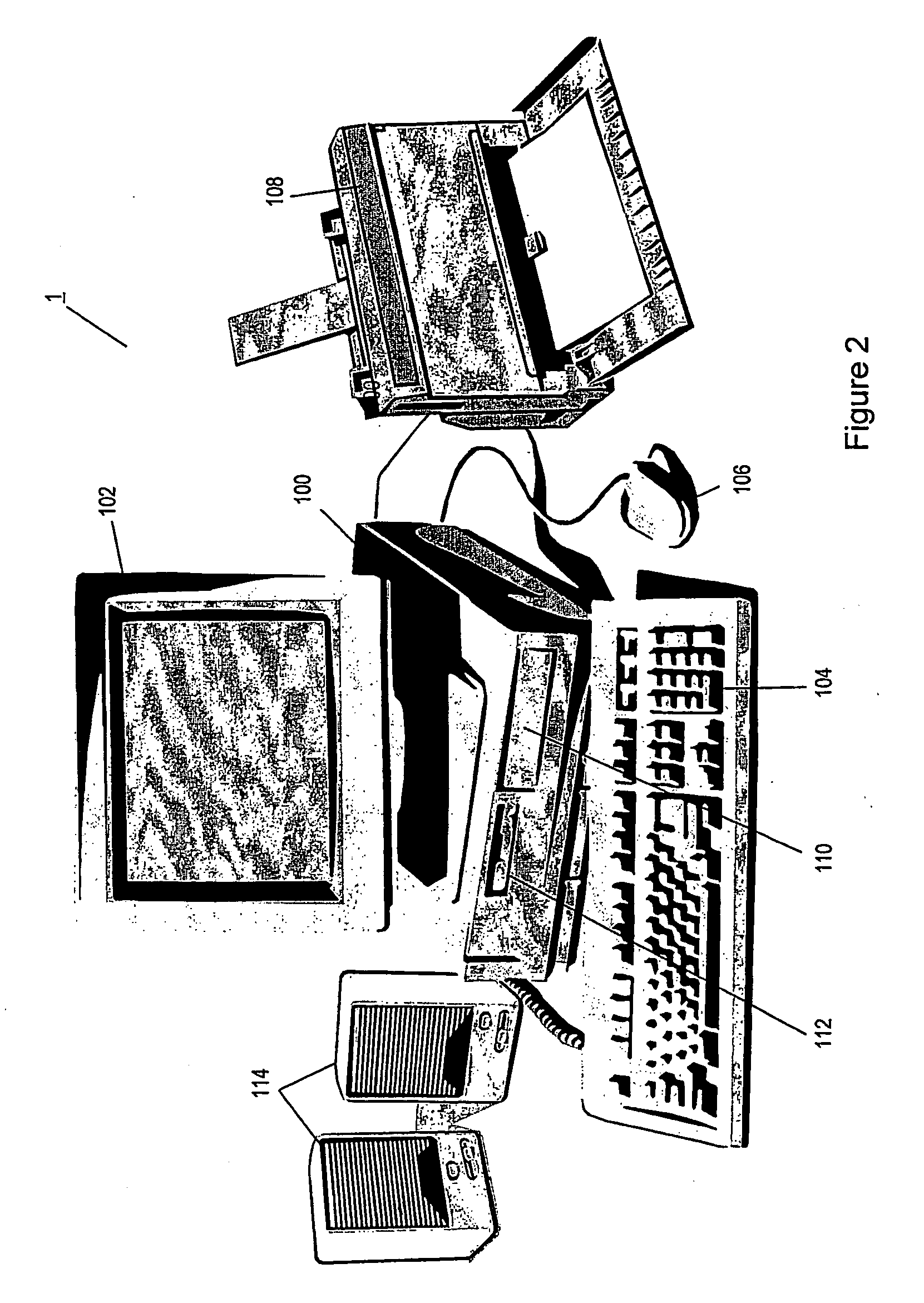Method and device for co-ordinating networked group members
- Summary
- Abstract
- Description
- Claims
- Application Information
AI Technical Summary
Benefits of technology
Problems solved by technology
Method used
Image
Examples
first embodiment
[0080] As an example of the above described operation, we now consider a first embodiment, which will be described with reference to FIGS. 5 and 6.
[0081] Within the first embodiment we virtually divide the available communications channels into two sets: waiting channels and main channels. Here, a receiver joins a waiting channel whilst waiting an action to start on an action channel, and then leaves the channel to join the action channel when the receiver is ready for the action to start—in other words leaving a waiting channel triggers an action on an action channel. As a result the waiting and action state is only dynamically associated, and it is possible that an action channel once triggered may then serve in turn as a waiting channel for another action channel. It is important to notice that the terms action channel is not directly associated with a communication channel, it could even be a simple action performed exploiting this mechanism.
[0082] As an example of the above, a...
second embodiment
[0088] A second embodiment which illustrates how the invention may be used in supply chain management or project management will now be described with respect to FIG. 7.
[0089]FIG. 7 illustrates a number of tasks which need to be completed within a given project, and the interrelationships between each task which govern the order in which they need to be completed. As an example, consider task E. Here, it will be seen that task E needs to be completed serially after all of tasks A, B, and C have finished, but that tasks A, B, and C may themselves be conducted in parallel (with task D, in addition). Another example is Task I, which must be completed serially after Tasks G and H have completed, but may be completed in parallel with Tasks L and M.
[0090] It is important to note here that the tasks illustrated in FIG. 7 may be almost any task. For example, the overall process shown in FIG. 7 might relate to the design of a new building or aircraft, or to the manufacture of a new car. Alt...
third embodiment
[0096] In order to address this problem, in a third embodiment we provide a solution to this problem by implementing a secure version of the IGMP protocol implemented in the access router. Here, a host's IGMP requests need to be authenticated before a router triggers the multicast routing protocol. This gives liability to edge routers for each host they accept. In order to extend such a mechanism to the co-ordination techniques of the present invention we associate to each receiver application which wishes to participate in a group communication a key message. A receiver application is then only allowed to join a waiting channel if it is able to authenticate itself by passing to the IGMP router the correct information. By exploiting such a mechanism we are able to protect against malicious join events (a malicious join event being by a malicious user who has no intention of leaving the waiting channel, hence effectively performing a Denial of Service attack on the other receivers), ...
PUM
 Login to view more
Login to view more Abstract
Description
Claims
Application Information
 Login to view more
Login to view more - R&D Engineer
- R&D Manager
- IP Professional
- Industry Leading Data Capabilities
- Powerful AI technology
- Patent DNA Extraction
Browse by: Latest US Patents, China's latest patents, Technical Efficacy Thesaurus, Application Domain, Technology Topic.
© 2024 PatSnap. All rights reserved.Legal|Privacy policy|Modern Slavery Act Transparency Statement|Sitemap



